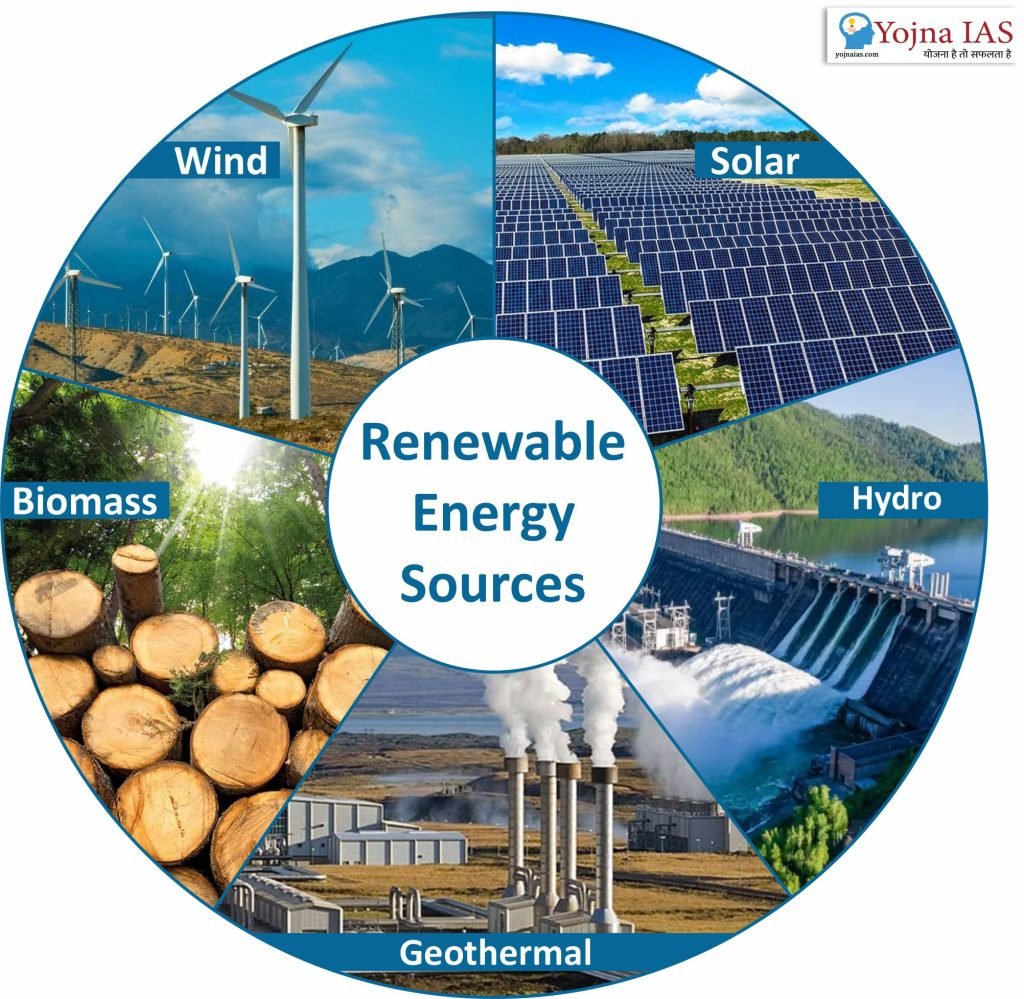05 Feb 2024 IEA’s Report-Electricity 2024
This article covers ‘Daily Current Affairs’ and the Topic details of “IEA’s Report Electricity 2024”. This Topic is relevant in the “Environment & Ecology” section of the UPSC CSE exam.
Why in the News?
Critical insights into India’s energy future were recently revealed by the International Energy Agency (IEA) in its report “Electricity 2024.” This thorough research identifies critical factors that will influence India’s power sector through 2026, including the continued use of coal, the rise of renewable energy, and the potential expansion of nuclear power.
What does the Electricity Report 2024 say?
Ongoing Dependence on Coal:
India anticipates maintaining its reliance on coal to satisfy the escalating demand for electricity until 2026. Despite a decline from 74% in 2023, coal-fired generation is projected to account for 68% of India’s electricity demand by 2026. The annual increase in coal-fired power generation is expected to be 2.5% from 2024 to 2026. Despite India’s commitment to achieving net-zero emissions by 2070, coal is expected to remain the dominant source, meeting 68% of the electricity demand.
Renewable Energy Generation:
The contribution of renewable energy (RE) generation remained relatively steady, constituting 21% of electricity generation in 2023. The growth in solar and wind energy was offset by reduced hydropower output. Around 21 gigawatts (GW) of RE capacity was added in 2023, resulting in RE comprising almost 44% of the total installed capacity in the same year.
Electricity Demand Dynamics:
India witnessed a 7% increase in electricity demand in 2023, driven by rapid economic growth and heightened requirements for space cooling. The expected annual average growth between 2024 and 2026 is 6.5%, with India’s electricity demand projected to surpass China’s by 2026, boasting the world’s fastest growth rate.
Diversification Efforts:
Besides expanding wind and solar power capacity, India is focusing on developing large hydro and nuclear power projects. The country has ambitious plans to triple its nuclear capacity by 2032, aiming to add 13 GW, with 6 GW currently under construction. Atomic power, now providing about 2% of the country’s electricity, is expected to increase in the coming years.
Hydropower Challenges and Mandates:
Changing weather patterns led to a 15% decrease in hydropower generation in 2023. The government mandated blending 6% of imported coal with domestic coal until March 2024 to ensure an uninterrupted power supply.
Small Modular Reactor (SMR) Technology:
The report underscores the increasing momentum behind small modular reactor (SMR) technology. SMRs are advanced nuclear reactors with a power capacity of up to 300 MW(e) per unit, about one-third of traditional atomic power reactors. These small, modular reactors can produce a significant amount of low-carbon electricity. While the development and deployment of SMR technology are progressing, challenges persist, and research and development efforts are accelerating.
Global Comparison and Emerging Economies:
While China anticipates the most significant growth, India’s electricity demand over the next three years may nearly match that of the United Kingdom. Developed economies experienced notable manufacturing and industrial output declines coupled with high inflation. Approximately 85% of new electricity capacity is anticipated from emerging economies, with South Asia, particularly China and India, taking the lead.
Global Nuclear Landscape:
The World Nuclear Association estimates, as of November 2023, reveal that 68 GW of nuclear capacity is under construction, 9 GW is planned, and 353 GW is proposed globally. Asia is anticipated to surpass North America’s nuclear power growth by 2026, capturing a 30% share of global nuclear generation.

GOVERNMENT INITIATIVES FOR GENERATING RENEWABLE ENERGY
- The International Solar Alliance (ISA) is a group of 121 nations founded by India. Most of these nations are sun-drenched countries entirely or partially located between the Tropics of Cancer and Capricorn. The alliance’s primary goal is to promote efficient solar energy to lessen reliance on fossil fuels.
- PM KUSUM: Farmers in the nation are encouraged to build solar pumps, grid-connected solar power plants, and other renewable energy sources. By 2022, the plan seeks to install 25,750 MW of solar and different renewable energy capacities.
- SRISTI is a program for sustainable rooftop implementation for solar transformation in India. The country’s beneficiaries will receive a financial incentive from the central government in exchange for establishing solar power plant rooftops.
- FAME (Faster Adoption and Manufacturing of Hybrid and Electric Vehicles) scheme in India, launched to promote electric mobility, offers financial incentives and subsidies to boost the adoption of electric and hybrid vehicles. FAME aims to reduce vehicular emissions, enhance energy security, and contribute to sustainable transportation. The scheme encourages the production and purchase of electric cars. It fosters charging infrastructure development, and overall advancement in the electric mobility ecosystem.
- In May 2018, a Solar-Wind Hybrid policy was released. The strategy’s primary goal is to establish a framework for developing large-scale grid-connected photovoltaic (PV) hybrid wind-solar systems to optimise and reduce the use of land, transmission infrastructure, and wind and solar resources.
Download Yojna daily current affairs eng med 5th feb 2024
Prelims practice questions
Q1) In the context of India’s preparation for Climate-Smart Agriculture, consider the following statements (UPSC Prelims 2021)
1) The ‘Climate-Smart Village’ approach in India is part of a project led by the Climate Change, Agriculture and Food Security (CCAFS), an international research programme.
2) The CCAFS project is conducted under the Consultative Group on International Agricultural Research (CGIAR), headquartered in France.
3) The International Crops Research Institute for the Semi-Arid Tropics (ICRISAT) in India is one of the CGIAR’s research centres.
Which of the statements given above are correct?
a) 1 and 2 only
b) 2 and 3 only
c) 1 and 3 only
d) 1, 2 and 3
ANSWER: D
Mains practice questions
Q1) What challenges does India face in achieving its targets for renewable energy capacity, as outlined in the National Action Plan on Climate Change?
I am a content developer and have done my Post Graduation in Political Science. I have given 2 UPSC mains, 1 IB ACIO interview and have cleared UGC NET JRF too.


No Comments